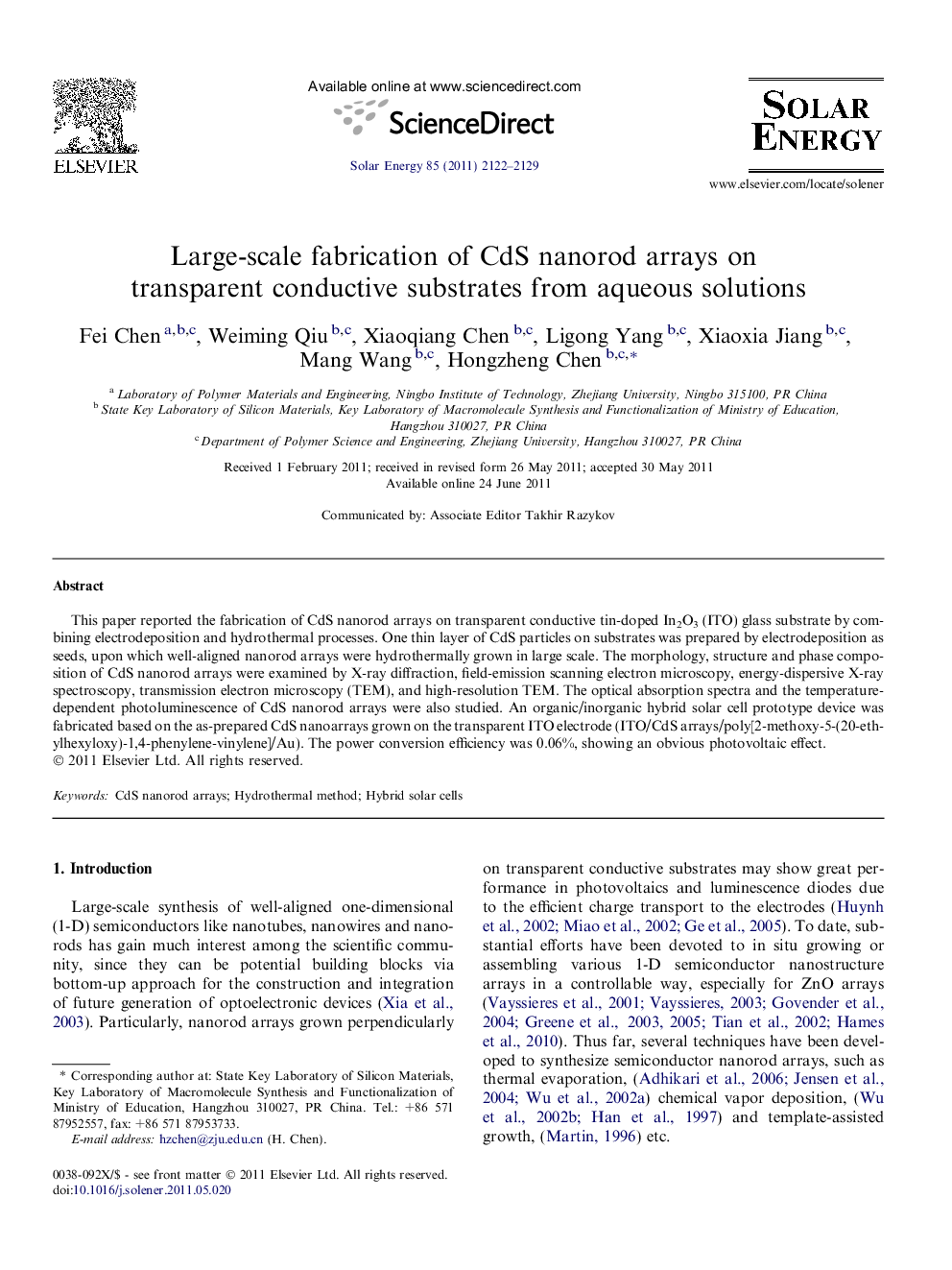| Article ID | Journal | Published Year | Pages | File Type |
|---|---|---|---|---|
| 1551028 | Solar Energy | 2011 | 8 Pages |
This paper reported the fabrication of CdS nanorod arrays on transparent conductive tin-doped In2O3 (ITO) glass substrate by combining electrodeposition and hydrothermal processes. One thin layer of CdS particles on substrates was prepared by electrodeposition as seeds, upon which well-aligned nanorod arrays were hydrothermally grown in large scale. The morphology, structure and phase composition of CdS nanorod arrays were examined by X-ray diffraction, field-emission scanning electron microscopy, energy-dispersive X-ray spectroscopy, transmission electron microscopy (TEM), and high-resolution TEM. The optical absorption spectra and the temperature-dependent photoluminescence of CdS nanorod arrays were also studied. An organic/inorganic hybrid solar cell prototype device was fabricated based on the as-prepared CdS nanoarrays grown on the transparent ITO electrode (ITO/CdS arrays/poly[2-methoxy-5-(20-ethylhexyloxy)-1,4-phenylene-vinylene]/Au). The power conversion efficiency was 0.06%, showing an obvious photovoltaic effect.
► We fabricated Highly-ordered CdS nanorod arrays on transparent conductive substrates. ► The process we used was electrodeposition combined with hydrothermal method. ► The device based on this CdS nanorod array shows obvious photovoltaic phenomenon.
